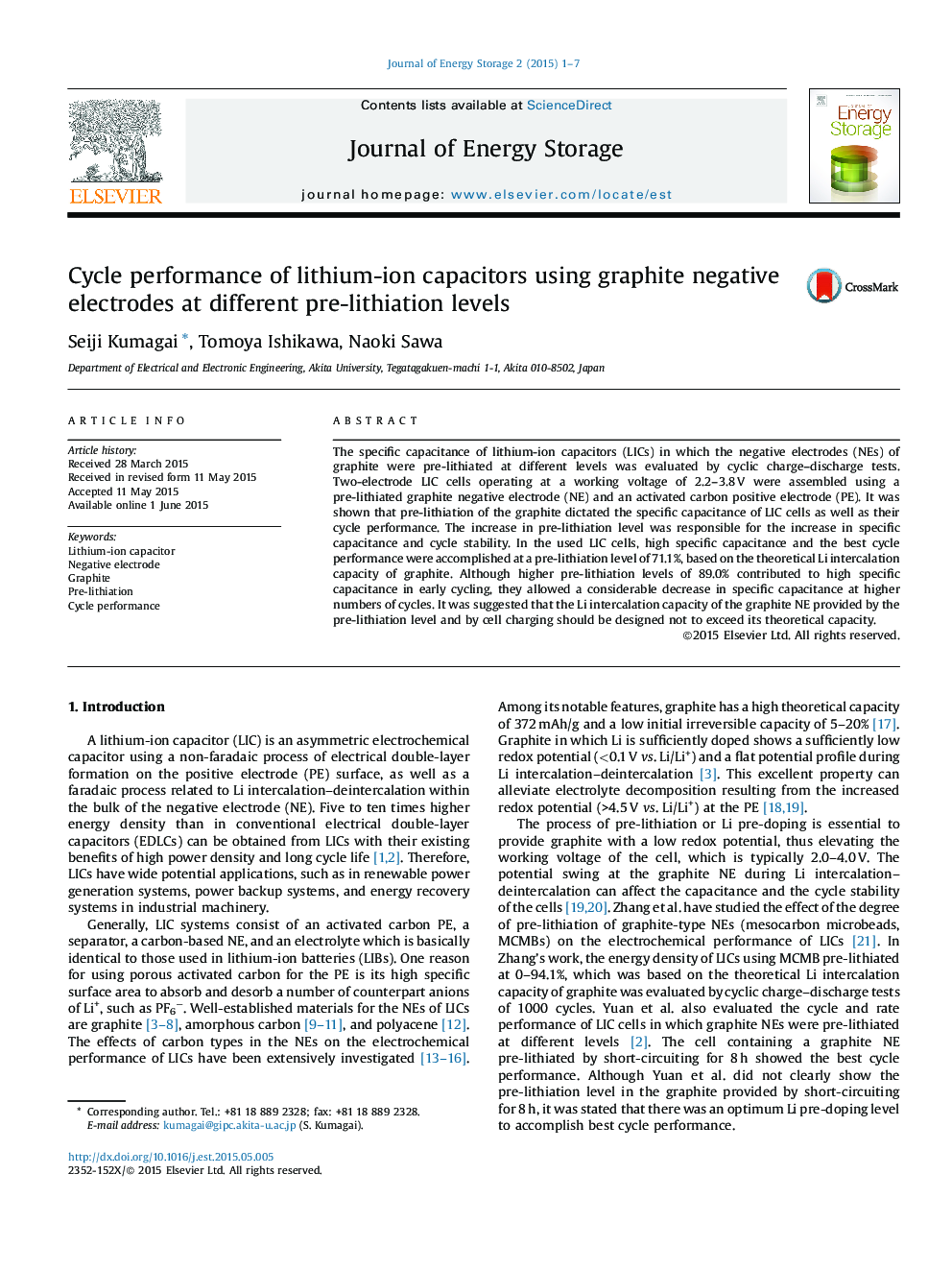| Article ID | Journal | Published Year | Pages | File Type |
|---|---|---|---|---|
| 1133126 | Journal of Energy Storage | 2015 | 7 Pages |
•Graphite was used as the negative electrode in a lithium-ion capacitor.•The role of pre-lithiation level in graphite cycle performance was studied.•A pre-lithiation level of 71.1% attained the best cycle performance.•The Li intercalation capacity provided by pre-lithiation and cell charging was related to cycle performance.
The specific capacitance of lithium-ion capacitors (LICs) in which the negative electrodes (NEs) of graphite were pre-lithiated at different levels was evaluated by cyclic charge–discharge tests. Two-electrode LIC cells operating at a working voltage of 2.2–3.8 V were assembled using a pre-lithiated graphite negative electrode (NE) and an activated carbon positive electrode (PE). It was shown that pre-lithiation of the graphite dictated the specific capacitance of LIC cells as well as their cycle performance. The increase in pre-lithiation level was responsible for the increase in specific capacitance and cycle stability. In the used LIC cells, high specific capacitance and the best cycle performance were accomplished at a pre-lithiation level of 71.1%, based on the theoretical Li intercalation capacity of graphite. Although higher pre-lithiation levels of 89.0% contributed to high specific capacitance in early cycling, they allowed a considerable decrease in specific capacitance at higher numbers of cycles. It was suggested that the Li intercalation capacity of the graphite NE provided by the pre-lithiation level and by cell charging should be designed not to exceed its theoretical capacity.
Graphical abstractFigure optionsDownload full-size imageDownload as PowerPoint slide
